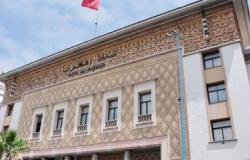Children suspected of committing adult crimes. The list of charges against these two 13-year-old teenagers is long: aggravated rape, sexual assault in a meeting, attempted extortion, violence committed in a meeting, repeated death threats, insult on the grounds of religion.
These minors, suspected of having committed an anti-Semitic rape on a 12-year-old girl last weekend in Courbevoie (Hauts-de-Seine), were indicted on Tuesday and placed in pre-trial detention. A third 12-year-old suspect was placed under the status of assisted witness for rape and indicted for the other offenses covered by the investigation. He is the subject of a provisional educational measure, according to the Nanterre public prosecutor’s office.
Minors represent approximately 1% of the French prison population. “From the age of 13, you can be detained for criminal acts, and from the age of 16, for misdemeanor acts,” explains 20 Minutes Cécile Mamelin, vice-president of the USM (Union of Magistrates). “Under the age of 13, this is not possible” since the courts consider that these young people involved lack the capacity for discernment. “Few people know this, because we think that young people do not go to prison, even for serious crimes. But this ignores the reality of juvenile justice which provides a fairly strong response to the acts committed in 98% of cases,” insists the magistrate.
732 minors incarcerated
Who are these minors in detention? According to statistics from the Ministry of Justice, as of January 1, 2023, they were on average 16 and a half years old. The vast majority of them (96.6%) are boys waiting to be judged (60.9%). When suspected of having committed a crime, minors can be temporarily imprisoned for a period of 6 months which can be extended up to 1 year maximum. Once the investigation is completed, they can be placed in prison for a maximum of six months while awaiting trial.
“One of the particularities of their detention is that they are not mixed with adults,” continues Cécile Mamelin. As of January 1, 2024, 732 minors were incarcerated in France. A third in one of the 6 EPM (prison establishments for minors) which can accommodate around sixty detained minors, for a total of 351 places.
The others in one of the 47 areas for minors located within traditional prisons (QPM), essentially remand centers. Their size varies depending on the establishment: from 4 to 50 places, or even 115 places in Fleury-Mérogis. Unlike adult prisoners, “the principle of individual confinement is applied” for those under 18 years old. “Everyone has their own cell, with a few exceptions. For the rest, the treatment is essentially the same,” underlines the OIP (International Prison Observatory) in February 2021.
Compulsory education
“Under the age of 16, schooling is compulsory, even in detention,” recalls Cécile Mamelin. The criminal procedure code “provides that teaching or training constitutes the most important part of the incarcerated minor’s time,” indicates a circular from the Minister of National Education, Youth and Youth. associative life, broadcast in 2011. The teaching provided behind the walls “cannot be less than 12 hours, and is preferably around 20 hours”.
These courses “take place within school groups with small numbers (7 students maximum) and are taught by National Education teachers (permanent or temporary): mainly school teachers and secondary school teachers (often of technical and vocational high school)”, write the authors of a report published last May on behalf of the direction of judicial protection of youth, emphasizing that “a large proportion of incarcerated minors have experienced school failures”.
“In 2021, more than three quarters had been out of school for at least a year. » For the vice-president of the USM, this support allows them “to get back up to speed”. “Some pass the college certificate. We are able to get them back to school a little, at least for the duration of the detention,” she whispers.
Socio-educational activities
Problem is, half of the minors incarcerated are, on average, less than a month and a half. On the other hand, as indicated by the General Controller of Places of Deprivation of Liberty (CGLPL) last January, “the weekly teaching times are always less than those theoretically planned”: “15 hours in an establishment for minors (at instead of 20), 6 hours in the minor prison section (instead of 12)”. “The constraints inherent in the organization of the place of confinement combined with the need to form small groups to take into account the age and level of the young people lead to the subdivision of an already limited teaching time,” writes Dominique Simonnot in his “opinion relating to access of confined minors to education”.
At the same time, the judicial youth protection services organize socio-educational activities for young prisoners while the prison administration services take care of sporting activities. Detainees are also monitored by psychologists or psychiatrists. When they become adults, they leave EPM and juvenile halls to join adults. “It can sometimes be a little complicated for them because the quality of detention is not the same. It’s much harder,” observes Cécile Mamelin. “They are experiencing the full brunt of prison overcrowding while there is none among minors. »






